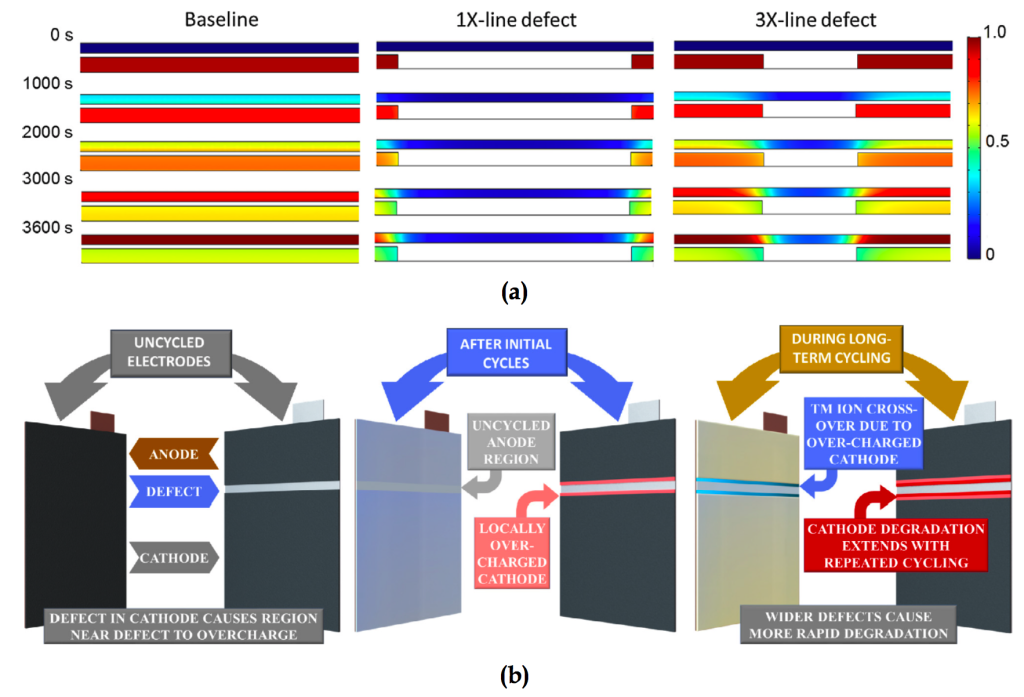- Supercomputing
- Energy Sciences

The Science/Achievement: A multidisciplinary team of researchers from Oak Ridge National Laboratory (ORNL) performed a comprehensive study on the influence of manufacturing defects on the lithium-ion cell performance. For that purpose, the positive electrodes (LiNi0.5Mn0.3Co0.2O2 cathodes) were manufactured with intentionally introduced defects at the ORNL’s battery manufacturing facility. Agglomerates and small pinholes were made in the cathodes. One of the most commonly anticipated defects in battery manufacturing would be non-uniform coating of the electrode, which was imitated by making electrodes with areas of missed coating. Two types of defective coatings were made, one with 3mm-wide strip of missed cathode coating and another one with three 1-mm wide strips of missed coating. While the total area and correspondingly the total amount of material missing from cathode is the same in both cases, performance degradation was observed to be more severe in cells with one large 3-mm defect. Numerical simulations of the lithium distribution in electrodes suggested that more severe local misbalance of positive and negative electrode leads to cathode overcharge at the edges of the defect.
Significance and Impact: Insights obtained from this study can be applied in battery manufacturing to reveal the relationship between manufacturing defects and battery safety/performance and reduce the scrap rate. While pinholes did not affect subsequent cell performance, the non-uniform coating of cathodes resulted in severe cell degradation due to local misbalance of active material.
Research Details
- Electrodes were made using the slot die coater; positive electrode was based on LiNi0.5Mn0.3Co0.2O2 and negative electrode was based on natural graphite.
- Full pouch cells were built with six anodes and six cathodes and were 500 mAh in capacity. Electrochemical testing was performed using Maccor battery cycler between 3.0 and 4.0 V.
- Fresh and cycled electrodes were characterized with XPS, Raman spectroscopy and XRD.
- A 2D continuum electrochemical model, representing section of electrode pair with defects was built and solved for Li concentration in electrodes using FEA.
Facility: Electrodes and pouch cells were made and cycled at the ORNL’s Battery Manufacturing Facility (NTRC-2).
Funding/Sponsor: This research was supported by Vehicle Technologies Office (VTO) Applied Battery Research subprogram (Program Manager: Peter Faguy).
Summary: This study reveals the effect of cathode coating defects on the electrochemical performance of lithium-ion cells. Four types of defects that can commonly occur in battery manufacturing were analyzed. It was determined that electrodes with pinholes and agglomerates may be salvageable which can reduce scrap rate, lower the cost and environmental impact of battery manufacturing. Electrodes with non-uniform coating showed the highest rate of degradation, which was explained by local overcharge due to misbalance of negative to positive ratio.



